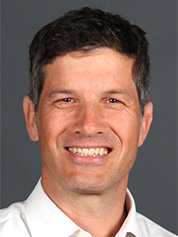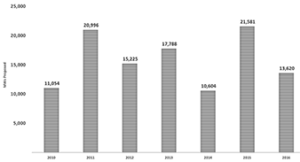Maybe I should have entitled this piece after the Talking Heads song “Once in a Lifetime” with the famous lyrics of “You may ask yourself, well, how did I get here?” (https://youtu.be/I1wg1DNHbNU) But we’re not going to ruminate on the insanity of what’s already happened but look forward to our mutual future. So instead, click on this url, https://youtu.be/VuAZTWGfQTs and listen to McFadden & Whitehead’s 1979 disco hit “Ain’t No Stopping Us Now” while you’re reading this…
OK, the real topic of this piece is about coal. Where we’ve been and where we’re going. We’ve made unbelievable progress, not in a “war on coal”, but rather in our mission to give all Americans clean air to breath, clean water to drink (remembering that 90% of pollution entering into Lake Michigan, for example, comes from the air) leading to substantially improved public health. Oh yea, and in the process we are reducing that pesky CO2 that is destroying the climate.
Thus, below is the Sierra Club’s Beyond Coal Campaign 2016 end of year report that was sent out recently. And in addition, a very nice article about the Campaign was published last week as well. So, while the new Administration may try to change or stop the work we’re doing…There Ain’t No Stopping Us Now!!!
Chuck,
If there’s one thing we can say for sure as 2016 comes to an end, it’s this: The U.S. is leading the world on reducing climate-disrupting pollution and
we’re not going backwards, regardless of who is in the White House.
As we head into the new year, we have incredible momentum on our side to meet the challenge ahead, thanks to your support of the Beyond Coal Campaign. And you don’t have to take our word for it—Forbes just named the Bloomberg Philanthropies’ investment in the Beyond Coal Campaign as #2 on its list of the best “big bets” in philanthropy (after Bill and Melinda Gates’ $1.55 billion investment in vaccines).
With your generous contributions and leadership, we secured many victories in 2016. Here are a few highlights:
245 coal-fired power plants have announced retirement since 2010—47% of U.S. coal plants.
We had our best year yet for solar and wind, with clean energy ranking as the nation’s fastest growing new source of electricity generation. As of September, 7,859 MW of solar and 1,725 MW of wind have been installed—that’s enough energy to power Delaware and Washington, D.C. combined.
Sulfur dioxide and nitrogen oxide pollution from coal plants—linked to health problems including asthma and heart attacks—have fallen 69% and 75%, respectively, from their record highs, thanks in large part to new federal regulations that safeguard our air and water.
Mercury pollution from power plants will be reduced by 74%, and as it falls, mercury levels in the tuna we eat are falling too.
By replacing coal with clean energy, we’re already on track to meet the 2030 targets of the Obama Administration’s Clean Power Plan, 13 years ahead of schedule!
Since 2010, the climate-disrupting carbon pollution from power plants has dropped by 457 million metric tons, the equivalent of taking 96 million cars off the road every year.
Annual health benefits from coal plants retired or proposed to retire since 2010 include prevention of 6,769 premature deaths, 10,510 heart attacks, and over 111,663 asthma attacks, and $3.2 billion saved in health care costs.
States, cities, and companies are making big new clean energy commitments that are driving innovation and creating thousands of jobs. Launched early this year, Sierra Club’s Ready for 100 campaign has already helped support 20 cities commit to powering their communities with 100% clean energy.
As we continue this progress and work for a just economic transition for coal communities, we’re not just making our air and water cleaner, and our climate safer—we’re also building grassroots power for climate action and changing energy markets, trends that Donald Trump won’t be able to reverse, no matter how many fossil fuel cronies he brings to Washington.
Despite his campaign promises, we won’t let Trump bring coal back. The decisions about where U.S. electricity comes from are made largely in states and cities, not in Washington, D.C. From utility commissions to state houses to city councils, these local venues have the final word on how much coal, gas, and clean energy we use. These are also the places where the Sierra Club and our allies have built strength for two decades, and that’s where we will double down in the coming years to block Trump’s plans to roll back climate progress.
In January, we’re launching a federal campaign to protect the gains we made during the Obama Administration, defend our bedrock environmental laws, partner with allies to stop the broader Trump agenda, and strengthen the power of the Sierra Club to keep winning in the years ahead. We look forward to sharing more details about our 2017 outlook and strategy during an upcoming webinar (please look for registration information in the New Year).
Finally, we have one last bit of exciting news to share. On Wednesday, the Beyond Coal Campaign was featured on the National Geographic Channel in the season finale of the Emmy-winning climate series Years of Living Dangerously. America Ferrera is the correspondent, and she takes you inside one of our local campaigns in Waukegan, Illinois, showing you the heart, soul, and tenacity that make up the DNA of the Beyond Coal Campaign. We’re so proud of the the story the episode tells and all the good work and people it represents. We hope you will be, too. Click here to watch online.
Again, thank you so much for making this work possible. We wish you a restful and rejuvenating holiday with your loved ones. We’re excited to get back to work with you in the New Year, perhaps our most important year yet.
Warm regards,
Bruce Nilles
Senior Campaign Director
Mary Anne Hitt
Campaign Director
Verena Owen
Volunteer Co-Lead
Sierra Club aims to retire 28 GW of coal generation in 2017
Rod Kuckro, E&E News reporter
Friday, January 27, 2017
The federal government’s alleged “war on coal” may have ended Jan. 20, but for the Sierra Club, the nation’s largest environmental group, the fight continues.
The group has set an ambitious goal for 2017 to negotiate the retirements of 28 gigawatts of coal-fired electric generation capacity by 2030 or sooner.
By comparison, the highest amount of negotiated annual retirements occurred in 2015, when 21.581 GW was either retired or proposed to shut down at a future date, Sierra Club data show.

Bruce Nilles
Bruce Nilles, senior director of the Sierra Club’s Beyond Coal Campaign. Photo courtesy of the Sierra Club.
As for the Trump administration’s promise to bring back coal, that’s just not in the cards, said Bruce Nilles, senior director of the Sierra Club’s Beyond Coal Campaign.
“It’s near impossible for him to reverse the progress,” Nilles said, referring to President Trump.
First of all, “No one is going to restart a shut-down coal plant,” he said in an interview.
One hurdle in restarting a closed plant is that it would be required to obtain permits as if it were new, he said.
And because Sierra Club’s campaign relies on court-supervised consent decrees or negotiated settlements with the owner of a coal generating unit, “that’s a private settlement between the Sierra Club and the utility. The federal government has no interest in that case,” as regulating power plants is left to states, Nilles said.
“The coal industry and their political allies have tried to block some of our settlements on occasion, and they have not succeeded,” he said.
Jeff Holmstead, former assistant administrator of U.S. EPA, said, “It may be possible to reopen some of the settlements under which a company has agreed to shut down a coal-fired plant at some point in the future, but it will depend entirely on the parties involved and the underlying legal basis for the settlement. Until you look at the details, there is no way of knowing whether a particular settlement could be undone under the Trump administration.”
Campaign ramped up after Obama election
The Beyond Coal Campaign was started in 2002, but its work accelerated after the election of President Obama in 2008.
Buoyed by an $80 million contribution from former New York Mayor Michael Bloomberg and his foundation, the campaign has resulted in the retirement or planned retirement of 110.9 GW of coal generation, with an end-of-2017 goal of 139 GW, an addition of more than 28 GW.
According to the U.S. Energy Information Administration, the United States as of the end of 2015 had roughly 277 GW of remaining coal-fired capacity.
To date, Nilles says, his campaign has resulted or will result in the closure of 246 coal generating plants, or 701 generating units, as a coal plant often has multiple units.
That leaves 277 plants to go, he said.
Colstrip agreement typifies campaign’s method
One of the campaign’s largest successes so far was an agreement announced in July with Puget Sound Energy and Talen Energy to close two of the four units at the Colstrip Generating Station in Montana in 2022.
With potential output of 2,094 megawatts, it is the second largest coal facility west of the Mississippi River.
The Sierra Club took aim at Colstrip in 2013 after the Montana Department of Environmental Quality allowed the plant to operate without a valid air permit. A federal court suit ensued, and rather than agree to install expensive pollution technology as required by the Clean Air Act, the operators opted to close the nearly 40-year-old units.
An anticipated appeal from the Montana DEQ never materialized.
Proposed retirements of coal-fired power plants
Proposed retirements of coal-fired power plants
[+] Graph courtesy of the Sierra Club.
Last year, the campaign had similar success in Ohio with American Electric Power Co. working with large industrial customers and consumer advocates. But a similar attempt to shut coal units owned FirstEnergy Corp. “couldn’t get to closure on an agreement, so we’re litigating that case.”
And settlement talks with Dayton Power & Light “were ongoing last week,” Nilles said.
What the AEP case “brought to light is that five years ago, coal always used to be the cheapest option — no disagreement. Five years ago, we were saying, ‘Do the right thing, it’s going to cost you more money, but there are a bunch of benefits that come with investments in clean energy,'” Nilles said.
But today, natural gas in Ohio can be less expensive and renewable power such as solar and wind has zero fuel cost, he said.
“A lot of our work is pulling back the curtain and exposing that these coal plants are increasingly not cost-effective,” Nilles said.
So the Sierra Club plans to make its “argument in the reddest of the red states like Utah, Montana and Indiana that it no longer makes sense to invest in extending the life of these coals plants,” he said.
Roughly 80 percent of the campaign’s work has occurred at the state level, working with regulators and coal plant owners.
“So we will be doubling down on our state advocacy work, highlighting how clean energy in most places today is cheaper,” Nilles said.
Noting that “air pollution historically has not been a partisan issue,” Nilles admits it has become one.
“Any help we were getting from EPA to crack down on pollution — those days are probably coming to an end.”
Over the last six years, “one coal plant has announced retirement every 10 days. We are working to make sure that we continue close to that clip,” he said.
So “more so than ever,” it’s full speed ahead to close down coal plants “because we don’t have the federal government doing anything other than getting in the way,” Nilles said. “We will step in and enforce the law.



